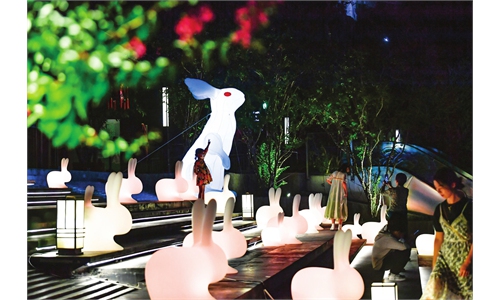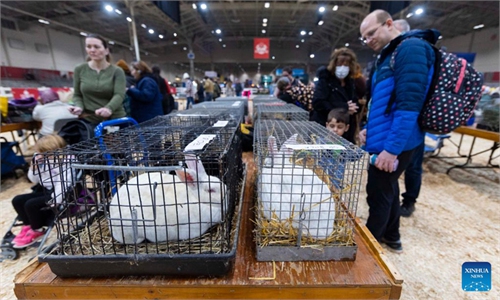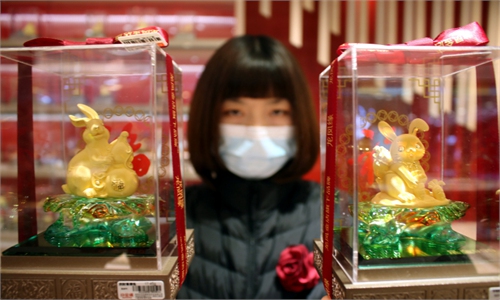ARTS / CULTURE & LEISURE
Rabbit symbol’s relevancy in modern society shows creativity of Chinese people
Staying vital
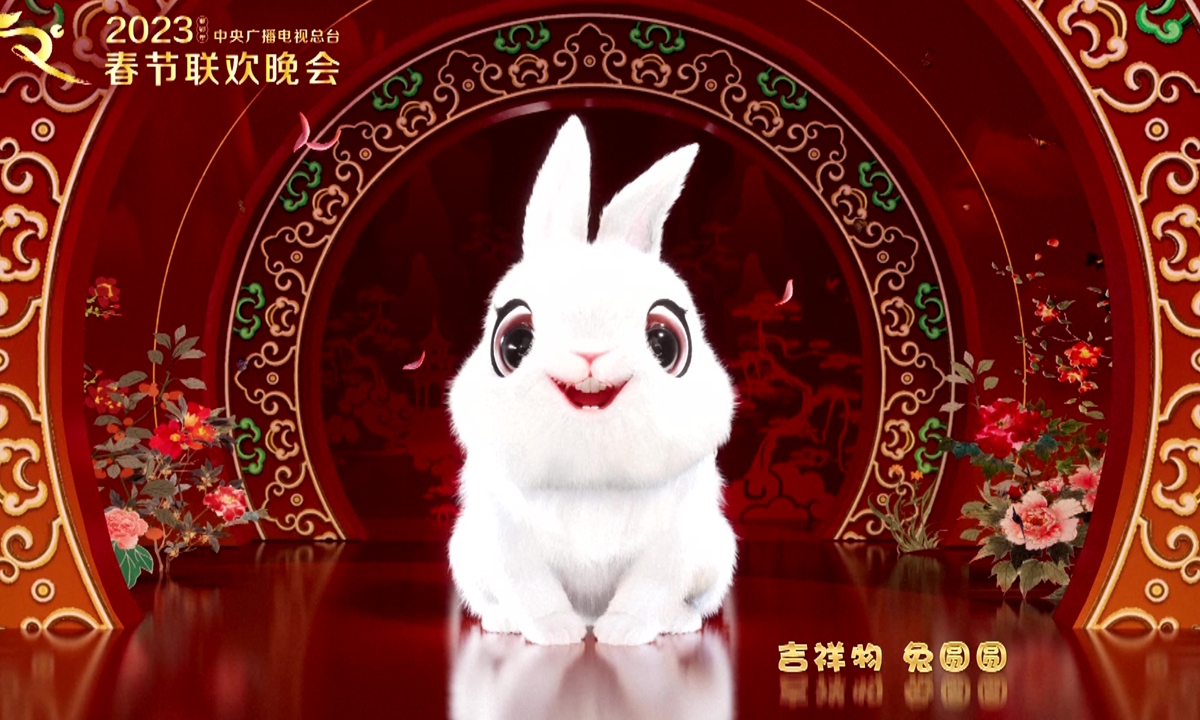
Tu Yuan Yuan, the mascot for CCTV's 2023 Spring Festival Gala Photo: VCG
Editor's Note:
As the Spring Festival, or Chinese New Year, approaches, the images of rabbits are appearing everywhere. In Chinese culture, the rabbit is not only a symbol of good luck, but also connected to longevity and fertility. Associated with the moon, the rabbit has appeared in numerous legends and classic literature works. In this three-article series, the Global Times will explore why Chinese people love this auspicious symbol and how it is staying relevant today.
Yan Mengya, a 28-year-old jewelry designer living in Southwest China's Chongqing Municipality, is glad to see that five customers have already ordered her studio's rabbit accessory line in the first two days of its release.
Besides the cuteness of the accessories themselves, the upcoming Year of the Rabbit certainly has played a role in getting people to open their wallets.
"Most of them are adults giving the necklace to their children, representing the wish that they grow up happy. Vice versa, there is a 29-year-old girl who booked a rabbit set for her grandmother. She said that the cute rabbit expressed her wish that - no matter how old her grandmother gets - she always be young and stay pure and vital," Yan told the Global Times on Tuesday.
Because of the many auspicious meanings tied to the rabbit in Chinese symbology, numerous Chinese artists have designed tons of cultural products inspired by the arguably cutest member of the Chinese zodiac. Many of these designs have proved extremely popular. For instance, a new design for Beijing Winter Olympic mascot Bing Dwen Dwen that sees the adorable panda get a makeover as a rabbit has sold out almost overnight.
Actually, the symbology of the rabbit is widely used in different sectors of Chinese modern society, and not just during the Year of the Rabbit. Some of these designs are not just rooted in traditional culture but also have been armed with advanced technology to show Chinese people's creativity and national pride, said cultural experts.
Peace and harmony
As Chinese lunar rover Yutu-2 (Jade Rabbit II) woke up in January 2019 after its first night on the dark side of the moon, Chinese netizens jumped for joy in front of their screens as they stared at the machine came out of "sleep mode" after enduring extreme low temperatures.
The rover's name is a tribute to Chinese mythology, which says that the goddess Chang'e lives on the moon with the Jade Rabbit. China's first moon rover, Yutu, landed on the moon at the end of 2013.
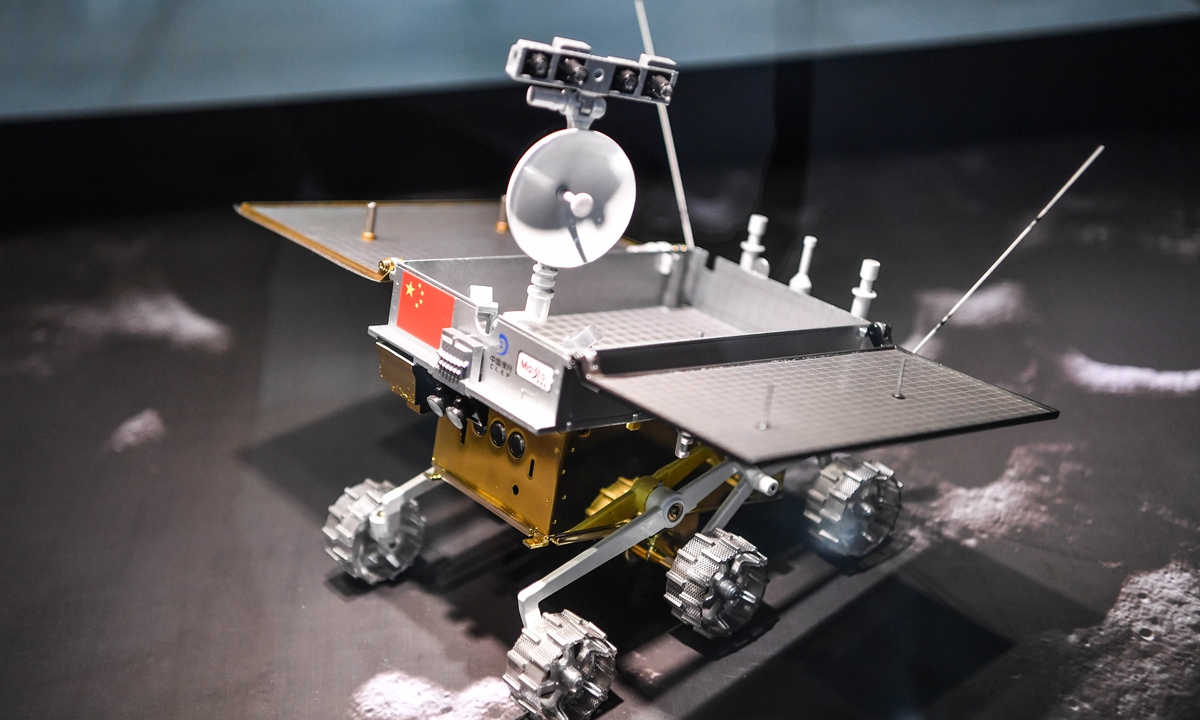
A model of the Yutu-2 lunar rover Photo: VCG
Zhang Yiwu, a professor at Peking University, told the Global Times that besides the traditional use of the rabbit as a symbol for longevity and the moon, younger Chinese see the animal as a symbol of harmony and peace. This new connotation can be seen in recent media works from the past few years such as the animated series Year Hare Affair, which started airing on the internet in March 2015.The animation uses anthropomorphic animals as an allegory for nations to represent the political, military and diplomatic events of the 20th century. The producers chose the rabbit to represent China.
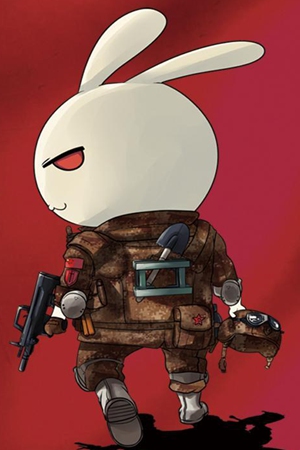
Promotion material for Year Hare Affair Photo: VCG
Through what the rabbits experienced, the animation narrates China's development in different sectors.Zhang said that the reason why the rabbit was chosen for China is that it has always been a peace-loving country that insists on developing together with other nations.
As an image representing China, the rabbit has also become a symbol for family and country in Chinese audiences' hearts.
Throughout society, many creative products inspired by the image of the rabbit have been popping up here and there.
Tu Yuan Yuan, the mascot for CCTV's 2023 Spring Festival Gala, was revealed at the end of December 2022 and it instantly captured the hearts of netizens with its adorable design.
According to a report from Shenzhen News, Tu Yuan Yuan was born by surveying the preferences of audiences and through systematic and detailed big data research. This is the first time in the 40-year history of CCTV's Spring Festival Gala that an original work of art was completed through big data analysis, the report noted.
Based on the foundation of the Chinese white rabbit, the mascot expresses the aesthetic style of traditional Chinese brushwork through 3D modeling technology, making it a combination of tradition and technology.
Remaining creative
The rabbit isn't just eye candy; it is also literally candy meant to tickle the taste buds.
Born in 1959, White Rabbit Milk Candy has accompanied generations of Chinese people through childhood with its classic brand image. The brand still uses the same rabbit logo, but has also been expanding its reach into other products by candy-scented perfume and a line of lipstick.
Lei Xiafei, an art researcher based in Chengdu, Southwest China's Sichuan Province, told the Global Times that the rabbit icon has historically been a popular character in Chinese art, especially porcelain and engravings.
"China is known for its porcelain culture; the glossy texture of the material can very vividly deliver a sense of 'purity' and the 'meekness' of the rabbit," Lei noted.
Lei also commented that the reason why the rabbit icon is so loved by the Chinese people is because its humble and friendly character is part of Chinese people's personality.
No matter if it is the past or present, China's interpretation of the rabbit has constantly remained vital and creative, and is sure to continue staying relevant and keep evolving into the future so long as Chinese keep this auspicious symbol in their hearts.
